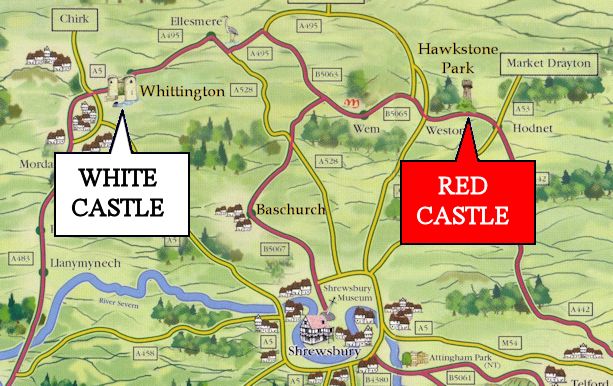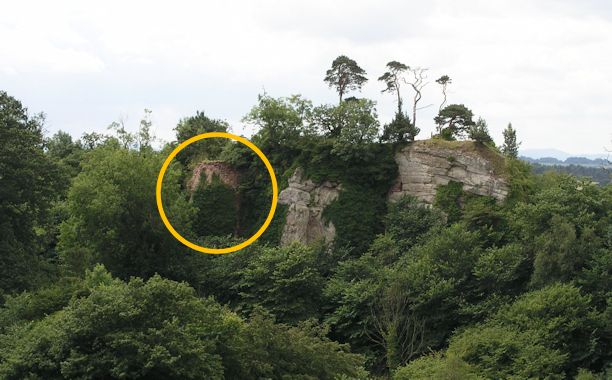Page 5 of 11
The Chalice of Magdalene
The Two Cliffs

Map showing the White Castle and Red Castle around ten miles apart.
After following many dead-end avenues of research, Graham eventually hit upon the idea that the Shepherd’s Songs could refer to the Psalms of the Bible. The Old Testament Psalms are ancient religious songs that were said to have been written by the Israelite king David who was, according to the Bible, a simple shepherd before becoming the Israelite hero by slaying the Philistine giant Goliath. The Psalms were indeed "shepherd's songs" and they were preserved in a book that was the most widely available book in the world. Had Thomas Wright decided to use verses from the Psalms to somehow lead to where he had hidden the Marian Chalice? Perhaps this was the key to the mysterious numerals. If so, then the first line might indicate the number of the Psalm (each of the 150 Psalms are ascribed a number in the Bible) and the second line could refer to the verse in the relevant Psalm.
It seemed beyond coincidence that the verse should refer to the shepherd David and a horn - the last verse of Wright’s poem included the line "the horn was blown." Was Wright assuring his reader that he or she was on the right track? The reference to the lamp in the Psalm verse may even have been used to indicate a guiding light, the following verses perhaps?
Psalm 132, verse 17 reads: There will I make the horn of David to bud: I have ordained a lamp for mine anointed.
The first number in the top line was 132, and the first number in the lower line was 17. Did this, Graham wondered, mean that the 17th verse of Psalm 132 was the first clue in the search for the treasure. The second number on the top line was 31, and the first number of the second line was 3. This might mean that the second clue was the 3rd verse of Psalm 31 – and so on. When Graham consulted the Bible and read the first possible clue, he was sure he was on to something.

For thou art my rock and my fortress – The Red Castle, built into the cliff at Hawkstone.

The second numbers in the sequences are 31 and 3: Psalm 31, verse 3 reads: For thou art my rock and my fortress: therefore for my name's sake lead me, and guide me.
The Red Castle is so named because of the red brick from which it is built. It is a strange circular tower built into the side of a cliff during the Middle Ages. Graham was certain that he was right about the mysterious numbers in Thomas Wright’s book being references to Psalm verses in the Bible. On a sunny February morning, Graham first stood on top of this almost forgotten, overgrown building and consulted what appeared to be the next clue. If his reasoning was correct, it was Psalm 61, verse 2, the final line of which read: Lead me to the rock that is higher than I.

Again the reference seemed to correlate with a search – "lead me, and guide me" - but where? The verse included mention of a rock and a fortress and in Wright’s poem Gawain stood on the battlements of the Red Castle. The Red Castle is a fortress built into the rocks. Is this what the conundrum was referring to? Graham decided to go to the Red Castle to see if the next Psalm verse might be a reference to some other landmark in the vicinity.


From the Red Castle there is only one higher location in the immediate vicinity: a towering rock called the White Cliff which directly overlooks the castle about a quarter of a mile to the west. On top of the White Cliff is the arch of a ruined chapel, built in the eighteenth century by the owner of the Hawkstone Park estate, one Rowland Hill. Like the Red Castle, it would have been there in Thomas Wright’s time a century later. Surely, this had to be the place the verse had been chosen to allude to.
Lead me to the rock that is higher than I – The White Cliff, seen from the Red Castle.








